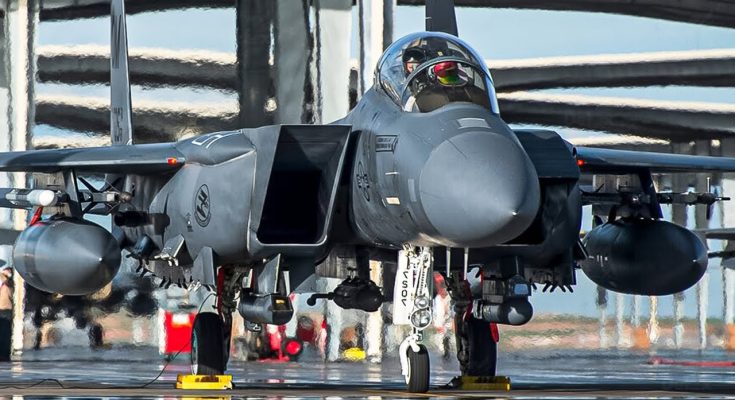The F-15E Strike Eagle is a powerhouse in the U.S. Air Force, renowned for its versatility and ability to perform a variety of critical missions, from precision strikes to intelligence gathering. As a dual-role fighter, it combines the capabilities of an air superiority fighter and a ground attack aircraft, making it invaluable in modern combat. Preparing an F-15E Strike Eagle for its next mission is a complex and meticulous process, requiring coordination between the flight crew, maintenance teams, and support staff.
Initial Preparation and Briefing
The preparation for a mission begins well before the aircraft ever leaves the ground. At an Air Force base, the first step is the mission briefing, where the pilots and their crew chief gather to review critical details about the operation. The mission planning team will go over intelligence reports, weather conditions, target locations, and rules of engagement. For the F-15E Strike Eagle, this may include the type of ordinance it will carry, such as air-to-ground bombs, guided missiles, or electronic warfare equipment.
The pilots, who fly the F-15E in a two-person crew, include both a pilot and a weapons systems officer (WSO). While the pilot handles the flight aspects of the mission, the WSO is responsible for targeting, managing weapons systems, and navigation. Their coordination and teamwork are essential, as the F-15E is specifically designed for long-range, high-payload, and precise strike missions.
Aircraft Inspection and Maintenance
Once the briefing concludes, the aircraft moves to the maintenance area, where a crew of skilled technicians inspects and prepares the F-15E for flight. The maintenance personnel perform a detailed check of the aircraft’s critical systems, including its engines, avionics, and weaponry. The strike eagle’s ability to carry precision-guided munitions (PGMs) means that both the airframe and weapons systems must be in perfect working order to ensure mission success.
One of the most important checks is the engine inspection. The F-15E is powered by two Pratt & Whitney F100 engines, which provide more than enough thrust for high-speed flight and the ability to carry heavy payloads. These engines undergo extensive checks for any signs of wear or damage, especially after each mission. The hydraulic and electrical systems are also tested, as they are essential for the aircraft’s maneuverability and the functioning of its weapons systems.
The weapons loadout is another critical element. Depending on the mission, the F-15E may carry laser-guided bombs (LGBs), Joint Direct Attack Munitions (JDAMs), or air-to-air missiles like the AIM-120 AMRAAM. Once the weapons are loaded, the systems are calibrated, and everything is configured for the intended strike. The aircraft’s targeting pods, radar systems, and navigation equipment must also be checked to ensure they are functioning properly, providing the crew with real-time data for precise targeting.
Pre-Flight Checks and Fueling
With the maintenance complete, the aircraft is moved to the runway for pre-flight checks. These checks include ensuring the cockpit instruments are functioning properly, the communications systems are clear, and the flight controls are responsive. The pilots and crew chief perform a final walk-around inspection of the aircraft, looking for any potential issues that might have been overlooked during the earlier checks.
As part of the pre-flight process, the F-15E is fueled up, often with a mix of JP-8 fuel or JP-5 for carrier-based operations. The aircraft is capable of carrying substantial amounts of fuel, allowing it to execute long-range strike missions without needing to refuel in midair. The refuelling process is tightly controlled to ensure the aircraft has the necessary fuel load for the mission, as fuel management is vital for both performance and range.
Takeoff and Mission Execution
Once everything is set, the F-15E is cleared for takeoff. The aircraft’s twin engines roar to life, sending the jet down the runway at high speed. The F-15E’s high-thrust engines provide the aircraft with the power to rapidly accelerate, even when carrying a full weapons load. Once airborne, the pilot and WSO work in tandem, executing their pre-determined mission plan, navigating the jet to its assigned target, and engaging enemy positions if required.
The F-15E Strike Eagle’s ability to fly at high speeds while carrying heavy ordnance and conducting precision strike missions makes it one of the most effective aircraft in the U.S. Air Force’s arsenal. Its advanced avionics and targeting systems, combined with the crew’s skill, ensure that it is a force multiplier in any conflict. The versatility of the F-15E allows it to operate in a wide range of environments—from high-altitude combat to low-level precision strikes.
Conclusion: A Ready Force
The preparation of the F-15E Strike Eagle for its next mission highlights the extensive coordination and expertise required to ensure success in modern air operations. From the mission briefing and aircraft maintenance to the takeoff and execution of a complex strike mission, the process involves the dedication of highly trained personnel working seamlessly to deliver decisive airpower. Whether conducting precision strikes or deep penetration missions, the F-15E remains a formidable asset for the U.S. Air Force, ready to fly and fulfill its mission with incredible precision and power.



